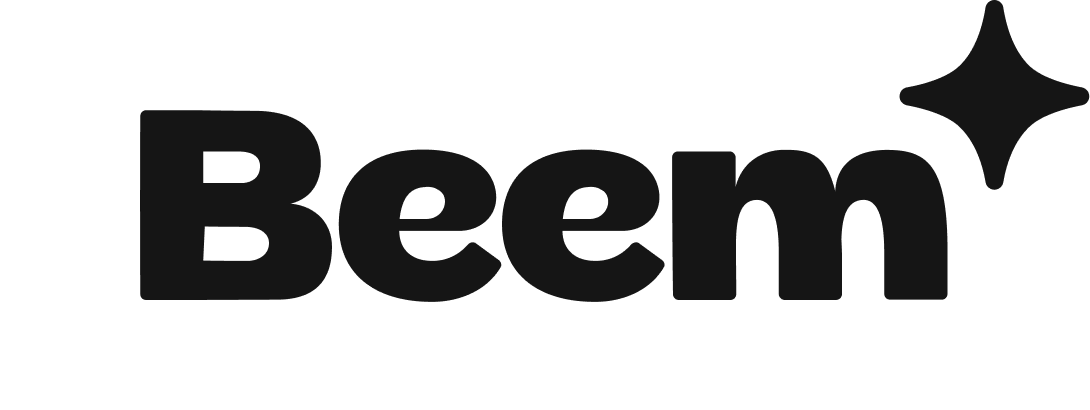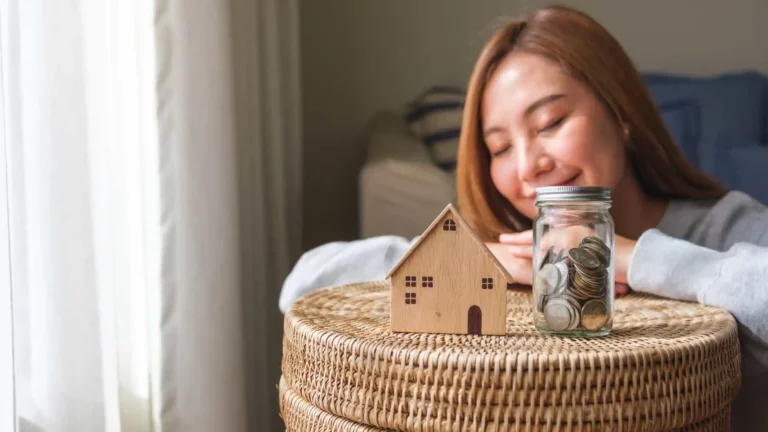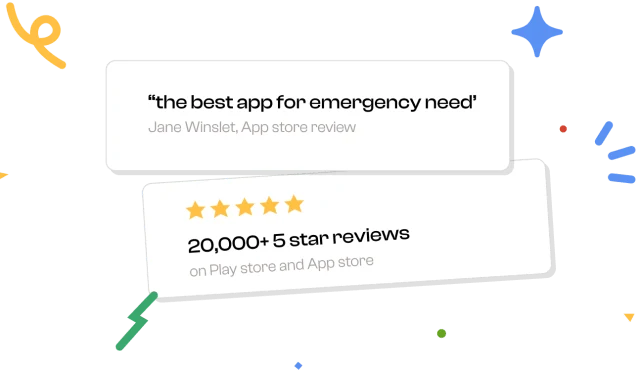Table of Contents
The purchase of a home is one of the most important, if not singular, financial decisions most people will make throughout their lives. But it can be daunting (especially finding how much money you need to save). From down payment to closing costs, knowing what you’ll need will help you prepare accordingly. This article explains what you need to know about saving for a house, including costs, how to budget, and tools that can help you save more.
How Down Payments Work
The down payment is typically the biggest initial expense when it comes to purchasing a home. You put a percentage of the home purchase price as down payment, and you borrow the rest. It depends on the type of loan and the cost of the home.
A 20% down payment is the standard amount for conventional loans, but many lenders have recently been accepting lower percentages — in some cases, just 3% or 5%. First-time homebuyers may now want less than 3.5% for FHA loans. Yet, military veterans may qualify for a VA loan with no down payment, and there is also a special type of lender called USDA loans that do not require a down payment since those homes are located in an area where you would be paying less than your waterfront property.
A smaller down payment may allow you to buy a home sooner, but it brings other costs with it. Most lenders will require you to buy private mortgage insurance (PMI) if you put down less than 20%. It does make your monthly costs higher, but it is completely removed when you reach 20% equity in the home.
Down payment and the planning to save it is a great question. That works out to a $60,000 down payment on a $300,000 house for 20% vs. just $15,000 for 5%. Knowing your financing options and down payment amount will help determine how much to put aside.
Read Related Blog: How To Save Money For A House In 6 Months
Calculating Total Homebuying Costs
Not having been reserved for it are the costs of a down payment. When you buy a home, you’ll need more than the price of the home, such as:
Closing costs: These are the total charges for things such as appraisal fees, home inspections, and title insurance. They are usually anywhere from 2% to 5% of the total cost of the house.
Move your move: Moving costs differ vastly depending on whether you are moving across the street or hiring professional movers.
Annual property taxes and homeowners insurance: When you own a home, instead of paying rent, homeownership comes with the expense of annual property taxes and homeowners insurance, which can greatly impact your budget.
Repairs and maintenance: Even new homes can present surprises with the need to repair or redo things.
Home maintenance planning: 1% of the home’s value each year is a common ballpark figure suggested by experts.
On a $300,000 home, you would likely need $6,000 to $15,000 more for closing costs and several thousand beyond that for taxes, insurance, and/or repairs. Knowledge of these costs ahead of time means there can be no nasty surprises for your finances later down the line.
Setting a Savings Goal
To identify a suitable savings target, seek to establish the sort of home you want and what it may cost. Look into the local housing market to get an idea of prices. After you have a sense of how much the house will cost, go ahead and figure out how much you can afford to put down, as well as what closing costs might be.
If, for example, you are purchasing a $300,000 property and putting down 10%, you would require $30,000 in deposit and roughly another $9,000 in closing expenses. Factor in other possible outlays — for moving, maybe, or some immediate repairs to the new digs — and you may be looking at saving $45,000 or over.
Set a timetable for your purchase; divide your total savings target figure by how many months there are until you hope to make the purchase. This method assists you in assessing your monthly savings. If you’re aiming for $45,000 in three years, for instance, you need to save approximately $1,250 a month.
Read related blog: Banks with High-Yield Savings Accounts
Budgeting for Monthly Expenses
Homeownership is not just an initial purchase. Things like monthly mortgage payments, property taxes, homeowners insurance, and utilities can burn a hole in the pocket quickly. These are the costs of carry, and understanding them is essential to getting your budget sorted.
So, the conventional wisdom is that your monthly housing costs (which typically includes Principal, Interest, Taxes, and Insurance — PITI) should be no more than 28% of your gross monthly income. If you take in $5,000 each month, then try to limit the housing costs to less than $1,400.
In preparation, know how much you are spending and where you can reduce costs. If you rent, live on a faux budget that simulates what you’ll pay once you buy a home. Put away the difference for your house fund and prepare to adjust to your post-purchase lifestyle.
Tips for Saving More
Setting away money for a home is going to take some willpower and require some planning. So here is how to save more money:
Automate your savings: Set up an automatic transfer to a high-yield savings account so you do not have another excuse.
Reduce discretionary spending: Take a good look at your budget and cut down on discretionary expenses such as eating out or streaming subscriptions.
Boost your earnings: Start a side job or do some freelance work to add to your income.
Temporarily downsize: Moving to a less costly, smaller rental or moving in with family will allow you to save more money quickly.
Smart with windfall: If you get a tax refund, year-end bonus, or other unexpected financial windfall, consider using that money to help save for your house.
Small adjustments (like not buying a coffee every day) compound. As an example, five dollars every day equals $1,825 after 365 days. This works incredibly well when combined with other methods.
How Much Money to Save for a House
The amount that you need is based on what your goals are, where you live, and how much money you have. That said, a general guideline is to put down 20% of the price of the home, if possible, to avoid PMI. Also, set aside 5% of the cost of the home for closing costs and another 1% to 3% for upfront fees.
This method would recommend saving for a $400,000 house:
- The down payment will be $80,000 for a 20%.
- $20,000 for closing costs.
- $4,000 to $12,000 in startup costs
So, you’d be looking at a total of roughly $104,000 to $112,000. Although this may sound overwhelming, it can easily be made manageable by starting early and breaking it down into smaller, more achievable goals.
Read related blog: How to Save Money for an Apartment
How Beem Can Help You Save Money for a House
Financial tools on the web make that savings process a lot easier. Beem provides features to budget, save, and monitor your expenses towards your financial goals.
Beem makes it easy to create specific savings targets for your house and check your status line by line. It offers tailored shelling out guidance and analysis to assist you in pinpointing places to scale back. Also, Beem helps you to stay consistent with its automation features so you can be sure that you are contributing regularly to your savings.
Using technology to make planning your finances easier makes it more manageable so that you keep your eye on the prize and achieve your goal of home ownership sooner rather than later. For more information, download the Beem app here.
Conclusion
While saving for a house might seem like an impossible dream, it is doable with discipline and careful planning. The first thing to understand, though, is the cost involved—from the down payment to monthly expenses. Be pragmatic, budget accordingly, and be organized (with the help of Beem).
Buying a home is a big deal, which means preparation is everything. By budgeting for this dream (preferably in advance, if possible), becoming your own bank and saving up, you will not only be able to realize it but will also secure your future financial soundness.
FAQs About How Much Money to Save for a House
How much should I save for a down payment on a house?
It varies based on the type of loan and purchase price of the home. While a 20% down payment is ideal to avoid PMI, some loans only require a small percentage of the purchase price (as low as 3% to 5%).
What are the total costs involved in buying a house?
On top of the down payment, at a minimum 2% to 5% of the home in closing costs and other expenses like moving, property taxes, insurance, and maintenance.
How can I set a realistic savings goal for a house?
Determine how much the home will cost, what the down payment and other expenses will likely be, and divide that total by the months between now and your desired date to find monthly savings.
What are some effective ways to save more money for a house?
You can set money aside automatically, avoid impulse spending, earn more with side hustles, and simply pour any one-time money sources over your path to reach the goal (such as bonuses or tax refunds).
How can Beem help me manage my savings for a house?
With Beem, you can save automatically by using their tools to set savings goals and track your progress. Its budgeting features can assist you in reducing costs and maintaining your plan.






























